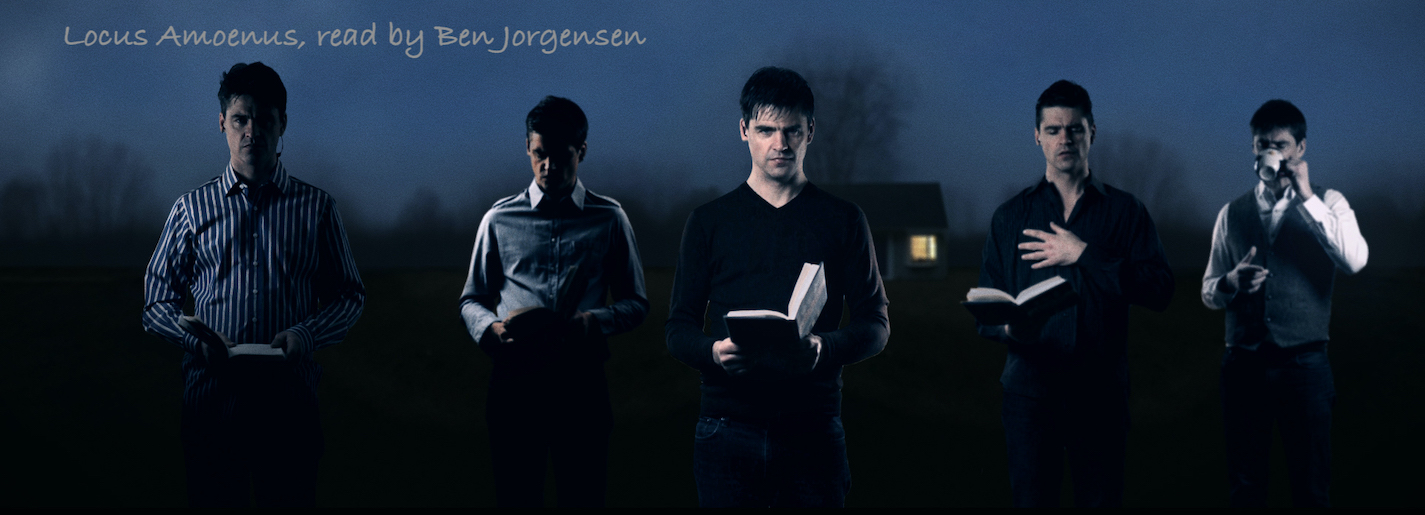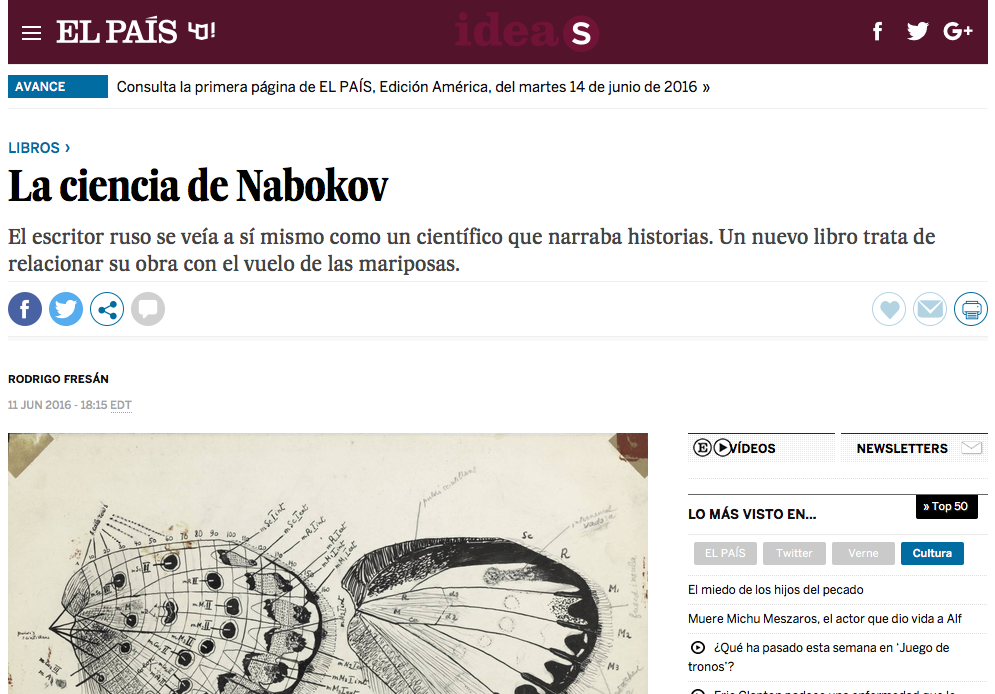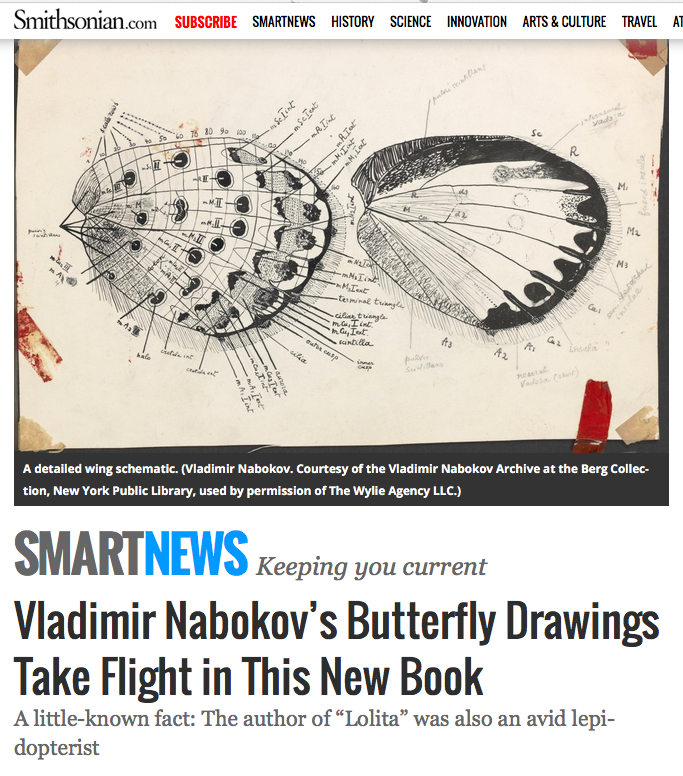Happy to be accepted into this extraordinary group of evolutionary theorists and excited about starting new work on a non-selectionist approach to learning.

Category Archives: teleology
My Mimicry Research Translated into French: Papillons et feuilles mortes
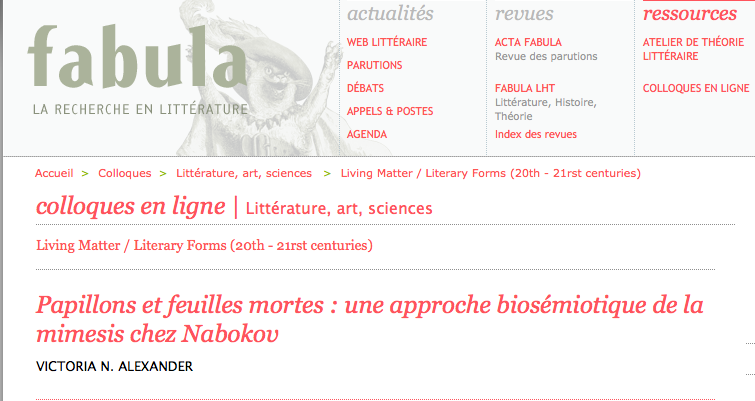
 “Butterflies and dead leaves: A Biosemiotic Approach to Nabokov’s Theory of Mimicry,” based on VN Alexander’s lecture at “Living Matter / Literary Forms”, organized at the Sorbonne Nouvelle in April 2013 by Liliane Campos, Yasna Bozhkova and Pierre-Louis Patoine. Text translated by Pierre–Louis Patoine.
“Butterflies and dead leaves: A Biosemiotic Approach to Nabokov’s Theory of Mimicry,” based on VN Alexander’s lecture at “Living Matter / Literary Forms”, organized at the Sorbonne Nouvelle in April 2013 by Liliane Campos, Yasna Bozhkova and Pierre-Louis Patoine. Text translated by Pierre–Louis Patoine.
Vladimir Nabokov n’a pas publié que des romans. On compte aussi à son actif plusieurs articles à propos des papillons, publiés par des journaux scientifiques. Au cours des années 1940, Nabokov est conservateur pour la section sur les papillons du Musée de zoologie comparée de l’université Harvard, et il développe une théorie – que peu prennent au sérieux à l’époque – à propos d’un groupe de papillons connu sous le nom d’Argus (Blues). Il croyait en effet que ceux‑ci avaient migré d’Europe aux Amériques via le détroit de Béring, en vagues successives, sur une période d’une dizaine de millions d’années. Cette théorie se révélera étonnamment juste, comme le démontrent en 2011 Roger Vila et son équipe, grâce au séquençage génétique. C’est cependant sans accès à l’information génétique que Nabokov formule son hypothèse. Il observe simplement le résultat de l’action des gènes et les variations structurelles différenciant un spécimen d’un autre. Ces observations lui donnent une compréhension intuitive de ce qui se passe au niveau des nucléotides (éléments de base de l’ADN), comme s’il avait pu visualiser l’image animée du développement de l’organisme et de l’évolution de l’espèce. Nabokov : une imagination magistrale, nourrie par une observation intensive. Nabokov comprenait bien les processus créatifs, le travail de cet « autre V. N., la visible nature ». Se reconnaissant dans la nature, et la reconnaissant en More…
Fine Lines in France, Greece, Japan and Russia
Fine Lines Reviewed on Hyperallergic and Metapsychology
Smithsonian Magazine reviews Fine Lines
Vladimir Nabokov might be best known as a novelist, specifically as the author of Lolita, but what many might not know is that one of his deepest passions was studying butterflies.
Now, a new book from Yale University Press honors his dedication to the delicate creatures. The book, Fine Lines, is a collection of more than 150 of his scientific illustrations of butterflies, rivaling John James Audubon in their detail.
Fine Lines in The Lepidopterists’ Society News
“…The book also shed light on Nabokov’s confusing legacy with regard to mimicry…Seasoned experts on various aspects of Nabokov’s legacy weigh in on the tricky questions about his dual pursuits in science and arts. Victoria Alexander of the Dactyl Foundation addresses Nabokov’s understanding of nature in light of more current ‘post-Darwinian’ views of evolutionary processes….”
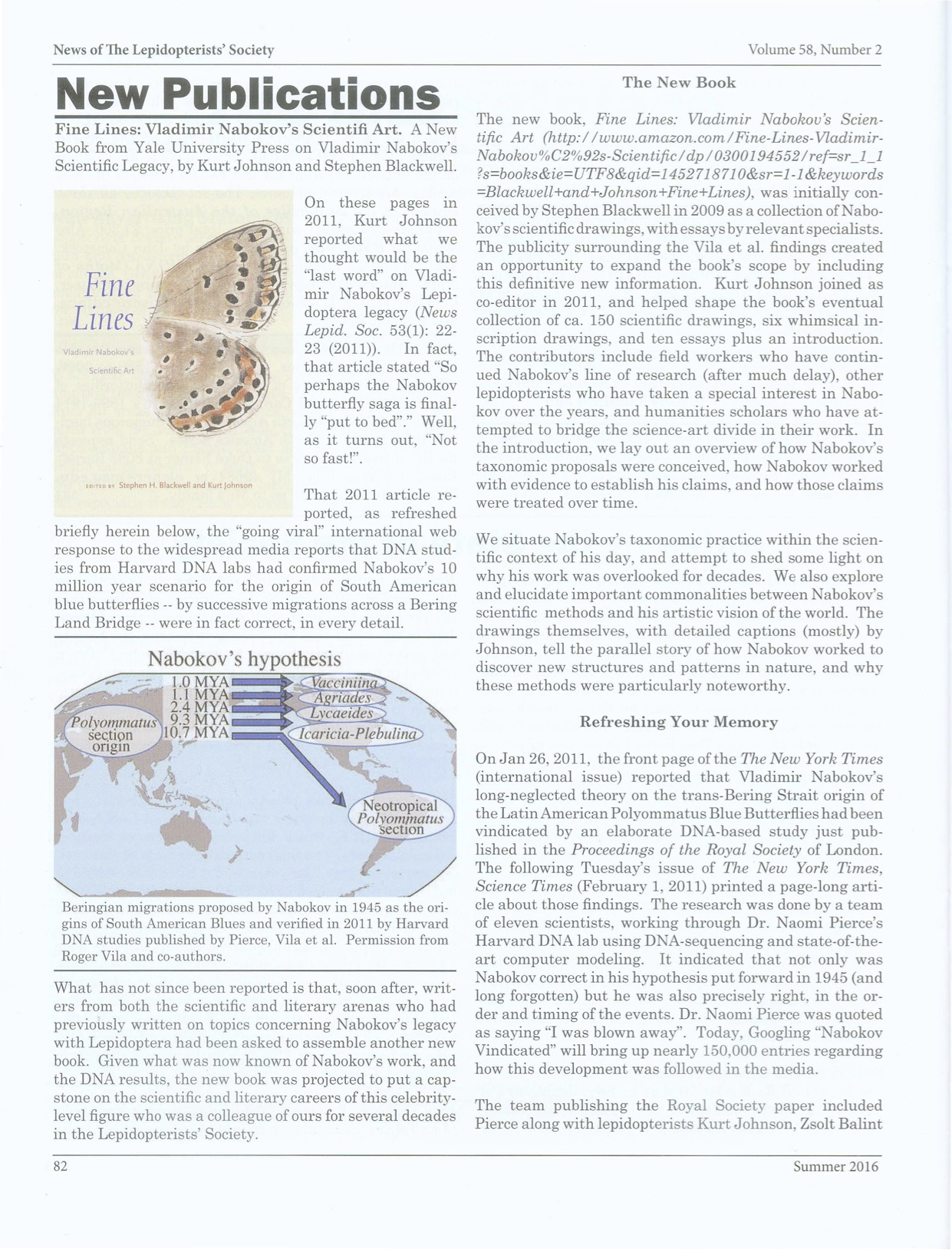
May 11, VN Alexander on Nabokov at Library in Rosendale, NY
 WEDNESDAY, MAY 11 7 PM FREE
WEDNESDAY, MAY 11 7 PM FREE
“Vladimir Nabokov and Insect Mimicry: The Artist as Scientist”
Victoria N Alexander
Public Scholars, NY Council for the Humanities: In collaboration with the NY Council for the Humanities, the Rosendale Public Library presents a slide/lecture on the controversial novelist and lepidopterist, Vladimir Nabokov, that reveals his insights into the mysteries of mimicry and how the scientific community responded to his studies. Fantastic images of insect mimicry will be used as examples of how important art is to good science. This event is made possible through the Public Scholars program with support from the National Endowment for the Humanities.

